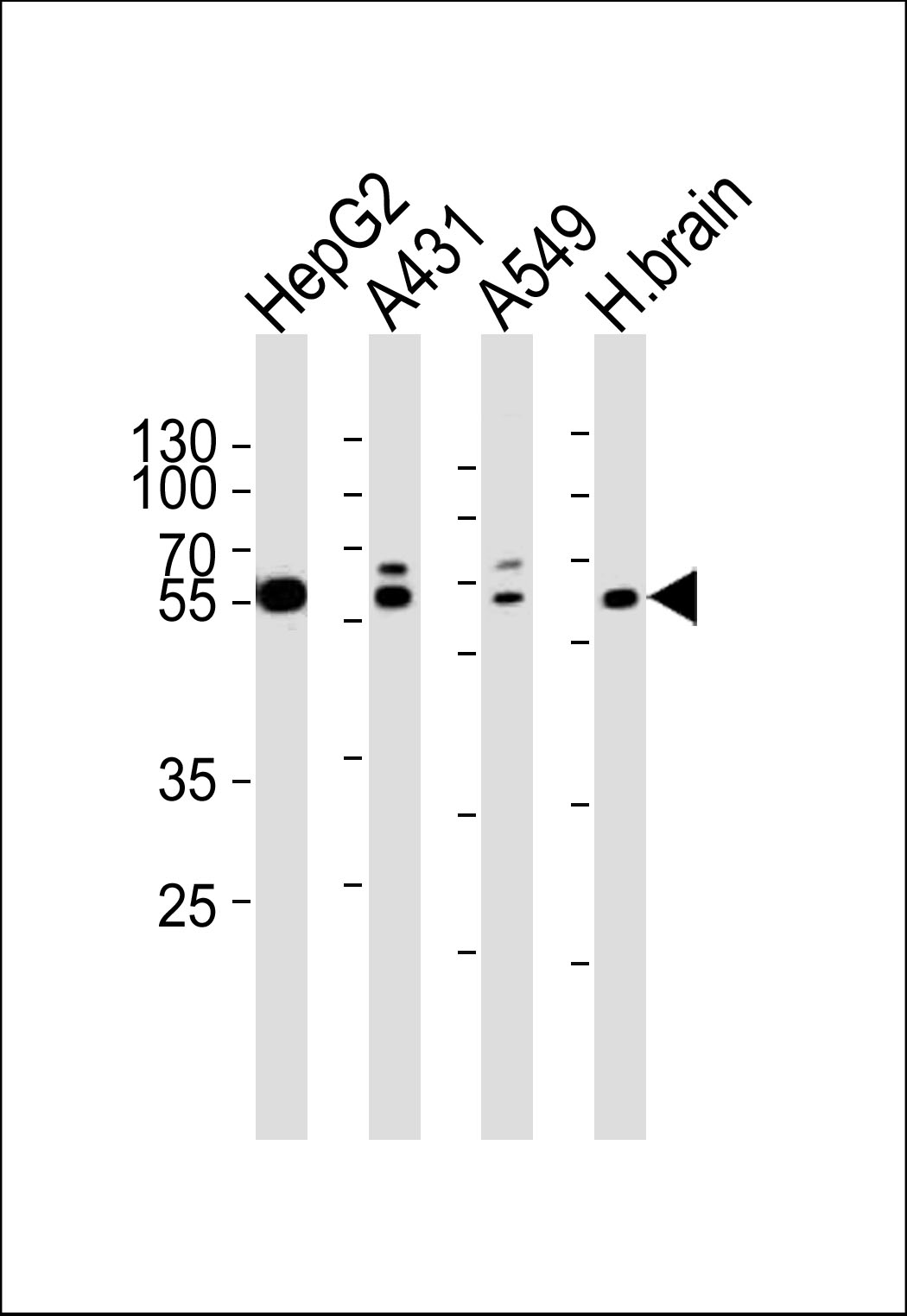SERAC1 Antibody (N-term)
Purified Rabbit Polyclonal Antibody (Pab)
- SPECIFICATION
- CITATIONS
- PROTOCOLS
- BACKGROUND

Application
| WB, E |
|---|---|
| Primary Accession | Q96JX3 |
| Reactivity | Human |
| Host | Rabbit |
| Clonality | Polyclonal |
| Isotype | Rabbit IgG |
| Calculated MW | 74147 Da |
| Gene ID | 84947 |
|---|---|
| Other Names | Protein SERAC1, Serine active site-containing protein 1, SERAC1 |
| Target/Specificity | This SERAC1 antibody is generated from a rabbit immunized with a KLH conjugated synthetic peptide between 41-64 amino acids from the N-terminal region of human SERAC1. |
| Dilution | WB~~1:1000 E~~Use at an assay dependent concentration. |
| Format | Purified polyclonal antibody supplied in PBS with 0.09% (W/V) sodium azide. This antibody is purified through a protein A column, followed by peptide affinity purification. |
| Storage | Maintain refrigerated at 2-8°C for up to 2 weeks. For long term storage store at -20°C in small aliquots to prevent freeze-thaw cycles. |
| Precautions | SERAC1 Antibody (N-term) is for research use only and not for use in diagnostic or therapeutic procedures. |
| Name | SERAC1 |
|---|---|
| Function | Facilitates the transport of serine from the cytosol to the mitochondria by interacting with and stabilizing Sideroflexin-1 (SFXN1), a mitochondrial serine transporter, playing a fundamental role in the one-carbon cycle responsible for the synthesis of nucleotides needed for mitochondrial DNA replication (PubMed:35235340). Plays an important role in the phosphatidylglycerol (PG) remodeling that is essential for both mitochondrial function and intracellular cholesterol trafficking (PubMed:22683713). Specifically involved in the exchange of the sn-1 acyl chain from PG 16:0/18:1(9Z) (also known as 1- hexadecanoyl-2-(9Z-octadecenoyl)-sn-glycero-3-phospho-(1'-sn-glycerol)) to PG 18:0/18:1(9Z) (also known as 1-octadecanoyl-2-(9Z-octadecenoyl)- sn-glycero-3-phospho-(1'-sn-glycerol)), a step needed in the bis(monoacylglycerol)phosphate biosynthetic pathway (PubMed:22683713). May have acyltransferase activity although the mechanism for PG remodeling has not been determined (PubMed:22683713). |
| Cellular Location | Mitochondrion membrane {ECO:0000250|UniProtKB:Q3U213}; Single-pass membrane protein. Endoplasmic reticulum Mitochondrion. Note=Localizes at the endoplasmic reticulum and at the endoplasmic reticulum-mitochondria interface. |
| Tissue Location | Widely expressed, with predominant expression in skeletal muscle and brain (PubMed:22683713, PubMed:35235340). In the brain, highest levels are found in the frontal and occipital cortices, cerebellum and hippocampus (PubMed:22683713) |

Thousands of laboratories across the world have published research that depended on the performance of antibodies from Abcepta to advance their research. Check out links to articles that cite our products in major peer-reviewed journals, organized by research category.
info@abcepta.com, and receive a free "I Love Antibodies" mug.
Provided below are standard protocols that you may find useful for product applications.
Background
Plays an important role in the phosphatidylglycerol remodeling that is essential for both mitochondrial function and intracellular cholesterol trafficking. May catalyze the remodeling of phosphatidylglycerol and be involved in the transacylation- acylation reaction to produce phosphatidylglycerol-36:1. May be involved in bis(monoacylglycerol)phosphate biosynthetic pathway.
References
Ota T.,et al.Nat. Genet. 36:40-45(2004).
Mungall A.J.,et al.Nature 425:805-811(2003).
Tort F.,et al.Mol. Genet. Metab. 110:73-77(2013).
Wortmann S.B.,et al.Nat. Genet. 44:797-802(2012).
If you have used an Abcepta product and would like to share how it has performed, please click on the "Submit Review" button and provide the requested information. Our staff will examine and post your review and contact you if needed.
If you have any additional inquiries please email technical services at tech@abcepta.com.













 Foundational characteristics of cancer include proliferation, angiogenesis, migration, evasion of apoptosis, and cellular immortality. Find key markers for these cellular processes and antibodies to detect them.
Foundational characteristics of cancer include proliferation, angiogenesis, migration, evasion of apoptosis, and cellular immortality. Find key markers for these cellular processes and antibodies to detect them. The SUMOplot™ Analysis Program predicts and scores sumoylation sites in your protein. SUMOylation is a post-translational modification involved in various cellular processes, such as nuclear-cytosolic transport, transcriptional regulation, apoptosis, protein stability, response to stress, and progression through the cell cycle.
The SUMOplot™ Analysis Program predicts and scores sumoylation sites in your protein. SUMOylation is a post-translational modification involved in various cellular processes, such as nuclear-cytosolic transport, transcriptional regulation, apoptosis, protein stability, response to stress, and progression through the cell cycle. The Autophagy Receptor Motif Plotter predicts and scores autophagy receptor binding sites in your protein. Identifying proteins connected to this pathway is critical to understanding the role of autophagy in physiological as well as pathological processes such as development, differentiation, neurodegenerative diseases, stress, infection, and cancer.
The Autophagy Receptor Motif Plotter predicts and scores autophagy receptor binding sites in your protein. Identifying proteins connected to this pathway is critical to understanding the role of autophagy in physiological as well as pathological processes such as development, differentiation, neurodegenerative diseases, stress, infection, and cancer.


